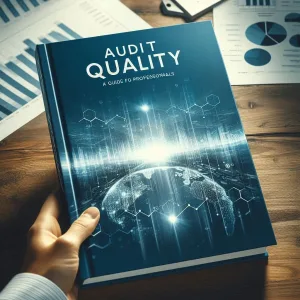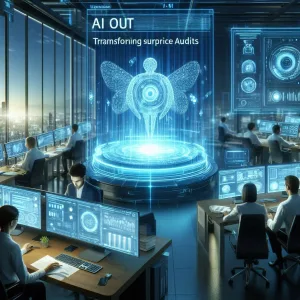ISO inspections are critical evaluations that assess an organization’s adherence to the standards set forth by the International Organization for Standardization (ISO). These inspections play a vital role in quality management by ensuring that processes, products, and services meet established criteria, thereby enhancing operational efficiency and customer satisfaction.
Definition of ISO Inspections and Their Role in Quality Management
ISO inspections are formal assessments that verify compliance with specific ISO standards, which are designed to ensure quality, safety, and efficiency across various sectors. These inspections involve a systematic review of an organization’s processes and management systems, focusing on how well they align with the relevant ISO standards. The primary goal is to identify areas of non-conformance and opportunities for improvement, which is essential for maintaining high-quality standards and achieving organizational objectives [10][14].
Overview of ISO Standards Relevant to Internal Audits
Several ISO standards are particularly relevant to internal audits, including ISO 9001, which focuses on quality management systems, and ISO 45001, which pertains to occupational health and safety management. ISO 9001 outlines the requirements for a quality management system, emphasizing customer satisfaction and continuous improvement. Internal audits based on these standards help organizations evaluate their compliance and effectiveness, ensuring that they not only meet regulatory requirements but also foster a culture of quality and excellence [1][9][11].
Importance of Compliance and Continuous Improvement in Organizations
Compliance with ISO standards is crucial for organizations aiming to enhance their operational processes and maintain a competitive edge. Regular ISO inspections facilitate continuous improvement by identifying gaps in compliance and providing actionable insights for enhancement. This proactive approach not only helps organizations avoid potential risks and penalties but also promotes a culture of accountability and excellence. By integrating technology into the inspection process, organizations can streamline audits, improve data accuracy, and enhance overall efficiency, making compliance a more manageable and effective endeavor [4][7][9].
ISO inspections are foundational to quality management and internal audits, ensuring that organizations adhere to established standards while fostering a culture of continuous improvement. As technology continues to evolve, its integration into the ISO inspection process will further enhance the effectiveness and efficiency of these critical evaluations.
The Evolution of ISO Inspections
ISO inspections have undergone significant transformations since their inception, evolving from traditional methodologies to modern practices that leverage advanced technology. This evolution is crucial for internal audit professionals and IT specialists who are navigating the complexities of quality management systems.
Historical Context of ISO Inspections and Their Methodologies
ISO standards were established to ensure quality and consistency across various industries. Initially, inspections relied heavily on manual processes, where auditors would conduct on-site evaluations, review documentation, and perform physical checks. These traditional methods, while foundational, often lacked the efficiency and accuracy required in today’s fast-paced industrial environment. The ISO 9001 standard, for instance, has seen various iterations, with the latest version emphasizing a more integrated approach to quality management, which includes the need for continuous improvement and customer satisfaction.
Challenges Faced in Traditional Inspection Processes
Despite their importance, traditional ISO inspection methods present several challenges:
- Time Consumption: Manual inspections can be labor-intensive, requiring significant time to complete audits and compile reports. This can lead to delays in identifying issues and implementing corrective actions.
- Accuracy Issues: Human error is a common concern in manual inspections. Inconsistent evaluations can result in overlooked defects or misinterpretations of compliance, ultimately affecting product quality and safety.
- Limited Data Utilization: Traditional methods often fail to leverage data effectively. The lack of real-time data analysis can hinder the ability to make informed decisions quickly.
These challenges highlight the need for a shift towards more efficient and reliable inspection processes.
Introduction to the Need for Technology in Overcoming These Challenges
The integration of technology into ISO inspections is not just beneficial; it is essential for overcoming the limitations of traditional methods. Digital inspection software and AI-driven tools can streamline the inspection process, enhancing both accuracy and efficiency. For instance, automated systems can quickly identify defects in production lines, significantly reducing the time required for inspections and allowing for immediate corrective actions. Additionally, the use of data analytics can provide insights that were previously unattainable, enabling organizations to make proactive decisions regarding quality management.
As industries continue to embrace digital transformation, the role of technology in ISO inspections will only grow, paving the way for more effective internal audits and improved compliance with ISO standards. This evolution not only addresses the challenges faced by traditional methods but also aligns with the broader goals of sustainability and continuous improvement in quality management systems.
Technological Tools Transforming ISO Inspections
In the realm of internal audits, particularly concerning ISO inspections, technology plays a pivotal role in enhancing efficiency, accuracy, and overall effectiveness. The integration of various technological tools is revolutionizing how audits are conducted, making the process more streamlined and data-driven. Here are some key technologies currently being utilized in ISO inspections:
- Software Solutions for Documentation and Compliance Tracking: Modern audit software, such as compliance management systems, allows organizations to maintain comprehensive documentation and track compliance with ISO standards effectively. These tools automate the documentation process, ensuring that all necessary records are easily accessible and up-to-date, which significantly reduces the risk of human error during audits [1][5].
- Integration of Data Analytics for Improved Decision-Making: Data analytics tools are increasingly being employed to analyze large volumes of data related to compliance and operational performance. By leveraging these analytics, internal auditors can identify trends, assess risks, and make informed decisions based on real-time data insights. This capability enhances the overall quality of the audit process and supports proactive risk management [3][7].
- Implementation of Mobile Applications for On-Site Inspections: Mobile technology is transforming on-site inspections by enabling auditors to conduct assessments using dedicated applications. These mobile tools facilitate real-time data entry, allow for immediate access to relevant documentation, and enhance communication among team members. This immediacy not only speeds up the inspection process but also improves the accuracy of the findings [10].
- Role of Cloud Computing in Enhancing Collaboration and Data Accessibility: Cloud computing has become a cornerstone of modern audit practices, providing a centralized platform for storing and sharing audit-related documents. This technology enhances collaboration among audit teams, regardless of their physical location, and ensures that all stakeholders have access to the most current information. The ability to work in a cloud environment also supports remote audits, which have become increasingly important in today’s digital landscape [2][4].
The integration of these technological tools is not just enhancing the ISO inspection process; it is fundamentally transforming how internal audits are conducted. By embracing these innovations, internal audit professionals and IT specialists can ensure that their organizations remain compliant with ISO standards while also improving the efficiency and effectiveness of their audit processes.
Benefits of Technology in ISO Inspections
The integration of technology into the ISO inspection process has revolutionized how internal audits are conducted, offering numerous advantages that enhance efficiency, accuracy, and compliance. Here are some key benefits:
- Increased Efficiency and Reduced Inspection Times: Technology streamlines the inspection process, allowing auditors to conduct assessments more quickly. Remote tools and online platforms enable audits to be performed without the need for extensive travel, significantly cutting down on time spent on logistics and enabling auditors to focus on the actual inspection tasks [3][4].
- Enhanced Accuracy and Reliability of Data Collection: Utilizing digital tools for data collection minimizes human error and ensures that the information gathered is both accurate and reliable. Automated systems can capture data in real-time, reducing the chances of discrepancies that often occur with manual data entry [5][6].
- Improved Compliance Tracking and Reporting Capabilities: Technology facilitates better tracking of compliance with ISO standards. Advanced software solutions can automatically generate reports that highlight compliance status, making it easier for organizations to identify areas that require attention and ensuring that they meet regulatory requirements [2].
- Facilitation of Real-Time Monitoring and Feedback Mechanisms: With the advent of digital inspection tools, auditors can monitor processes in real-time, providing immediate feedback to relevant stakeholders. This capability allows for quicker adjustments and improvements, fostering a culture of continuous improvement within organizations [8].
The adoption of technology in ISO inspections not only enhances operational efficiency but also strengthens the overall quality of audits, making it an essential component for internal audit professionals and IT specialists aiming to optimize their inspection processes.
Challenges and Considerations in Adopting Technology for ISO Inspections
The integration of technology into ISO inspections presents numerous advantages, but it also comes with its own set of challenges that organizations must navigate. Here are some key considerations for internal audit professionals and IT specialists:
- Resistance to Change: One of the most significant hurdles organizations face is the resistance to change from employees and stakeholders. Many individuals may be accustomed to traditional inspection methods and may be hesitant to adopt new technologies introduced by standards such as ISO 9001:2015. This resistance can stem from a fear of the unknown or a lack of understanding of the benefits that technology can bring to the inspection process [6][7].
- Cost Implications and Budgeting: Implementing new technology often requires substantial financial investment. Organizations must consider the costs associated with purchasing software, hardware, and other necessary tools, as well as ongoing maintenance and support. Budget constraints can limit the ability to invest in these technologies, making it essential for organizations to carefully plan and allocate resources to ensure successful implementation [8].
- Training and Skill Development: The successful adoption of technology in ISO inspections necessitates that internal audit professionals and IT specialists receive adequate training. This includes not only understanding how to use new tools but also developing the skills necessary to analyze data effectively and interpret results. Organizations must invest in training programs to equip their staff with the knowledge and skills required to leverage technology effectively [9].
- Ensuring Data Security and Compliance: As organizations increasingly rely on technology for ISO inspections, ensuring data security becomes paramount. Organizations must implement robust security measures to protect sensitive information and comply with relevant regulations. This includes safeguarding against data breaches and ensuring that all technology solutions meet compliance standards, which can be a complex and ongoing challenge [10].
While technology can significantly enhance the ISO inspection process, organizations must be prepared to address these challenges. By proactively managing resistance to change, budgeting effectively, investing in training, and ensuring data security, organizations can successfully integrate technology into their ISO inspection processes, ultimately leading to more efficient and effective audits.
Future Trends in ISO Inspections and Technology
The landscape of ISO inspections is undergoing a significant transformation, driven by advancements in technology. As internal audit professionals and IT specialists navigate this evolving terrain, it is essential to understand how emerging technologies are reshaping the ISO inspection process and what future trends may emerge.
Emerging Technologies and Their Impact
- Artificial Intelligence (AI): AI is revolutionizing the ISO inspection process by enabling more efficient data analysis and decision-making. Intelligent automation tools can streamline repetitive tasks, allowing auditors to focus on more strategic activities. This shift not only enhances productivity but also improves the accuracy of inspections by minimizing human error [5][12].
- Blockchain Technology: The integration of blockchain in ISO inspections promises to enhance transparency and traceability. By providing a secure and immutable record of transactions, blockchain can facilitate real-time monitoring and verification of compliance, making it easier to track adherence to ISO standards [10].
- Internet of Things (IoT): IoT devices are increasingly being utilized to gather real-time data during inspections. This technology allows for continuous monitoring of processes and systems, enabling auditors to identify potential issues before they escalate. The ability to access live data enhances the effectiveness of ISO inspections and supports proactive risk management [2].
Predictions for the Evolution of ISO Standards
As technology continues to advance, ISO standards are expected to evolve in several key ways:
- Incorporation of Digital Technologies: ISO standards will increasingly integrate digital technologies such as AI, blockchain, and IoT to address the complexities of modern business environments. This integration will help organizations navigate the challenges posed by digital transformation and ensure compliance with evolving regulations [10][15].
- Focus on Ethical Considerations: The development of standards addressing the ethical implications of AI is on the rise. The ISO/IEC JTC 1/SC 42 committee is actively working on guidelines to ensure that AI systems are developed and governed responsibly, emphasizing transparency and accountability.
- Sustainability and Continuous Improvement: As organizations prioritize sustainability, ISO standards will likely reflect this shift by incorporating sustainability certification as a business imperative. Continuous improvement will become a central theme in auditing practices, encouraging organizations to innovate and adapt to changing market demands [2].
The Importance of Continuous Improvement and Innovation
In the context of ISO inspections, the emphasis on continuous improvement and innovation is paramount. As technology evolves, so too must the practices and methodologies employed by internal auditors. The following points highlight the significance of this focus:
- Adaptation to Technological Advancements: Internal audit professionals must stay abreast of technological advancements to effectively leverage new tools and methodologies in their inspections. This adaptability will be crucial in maintaining the relevance and effectiveness of ISO inspections in a rapidly changing environment [12].
- Enhancing Audit Quality: By embracing innovation, organizations can enhance the quality of their audits. The use of advanced technologies can lead to more thorough inspections, improved risk assessments, and ultimately, better compliance with ISO standards [5][15].
- Fostering a Culture of Innovation: Encouraging a culture of innovation within organizations will be essential for driving continuous improvement in auditing practices. This culture will empower internal audit teams to explore new technologies and methodologies, ensuring that ISO inspections remain effective and relevant [7].
The future of ISO inspections is poised for significant transformation, driven by emerging technologies and a commitment to continuous improvement. Internal audit professionals and IT specialists must embrace these changes to enhance the effectiveness of their inspections and ensure compliance with evolving ISO standards.
Conclusion
In today’s rapidly evolving business landscape, the integration of technology into ISO inspections has become a pivotal factor in enhancing the efficiency and effectiveness of internal audits. The benefits of adopting technological solutions are manifold:
- Increased Efficiency: Technology streamlines the inspection process, allowing for quicker data collection and analysis. This not only saves time but also reduces the likelihood of human error, leading to more accurate results [10].
- Enhanced Data Management: Digital tools facilitate better organization and accessibility of records, ensuring that all relevant documentation is readily available for review. This is crucial for maintaining compliance with ISO standards and for conducting thorough audits [6].
- Improved Communication: Technology fosters better communication among audit teams and stakeholders, enabling real-time updates and collaboration. This transparency is essential for addressing issues promptly and effectively [12].
As organizations continue to navigate the complexities of compliance and quality management, it is imperative that they embrace these technological advancements. By doing so, they not only enhance their ISO inspection processes but also position themselves for greater operational excellence and risk management [2].
Internal audit professionals play a critical role in leading these changes. Their expertise in both auditing practices and technology implementation is vital for guiding organizations through the transition to more modern inspection methodologies. By championing the use of innovative tools and techniques, internal auditors can help ensure that their organizations remain compliant, competitive, and capable of adapting to future challenges [10][15].
In conclusion, the role of technology in ISO inspections is not just a trend; it is a necessary evolution that internal audit professionals must embrace to drive continuous improvement and uphold the highest standards of quality and compliance.
Find out more about Shaun Stoltz https://www.shaunstoltz.com/about/
This post was written by an AI and reviewed/edited by a human.



